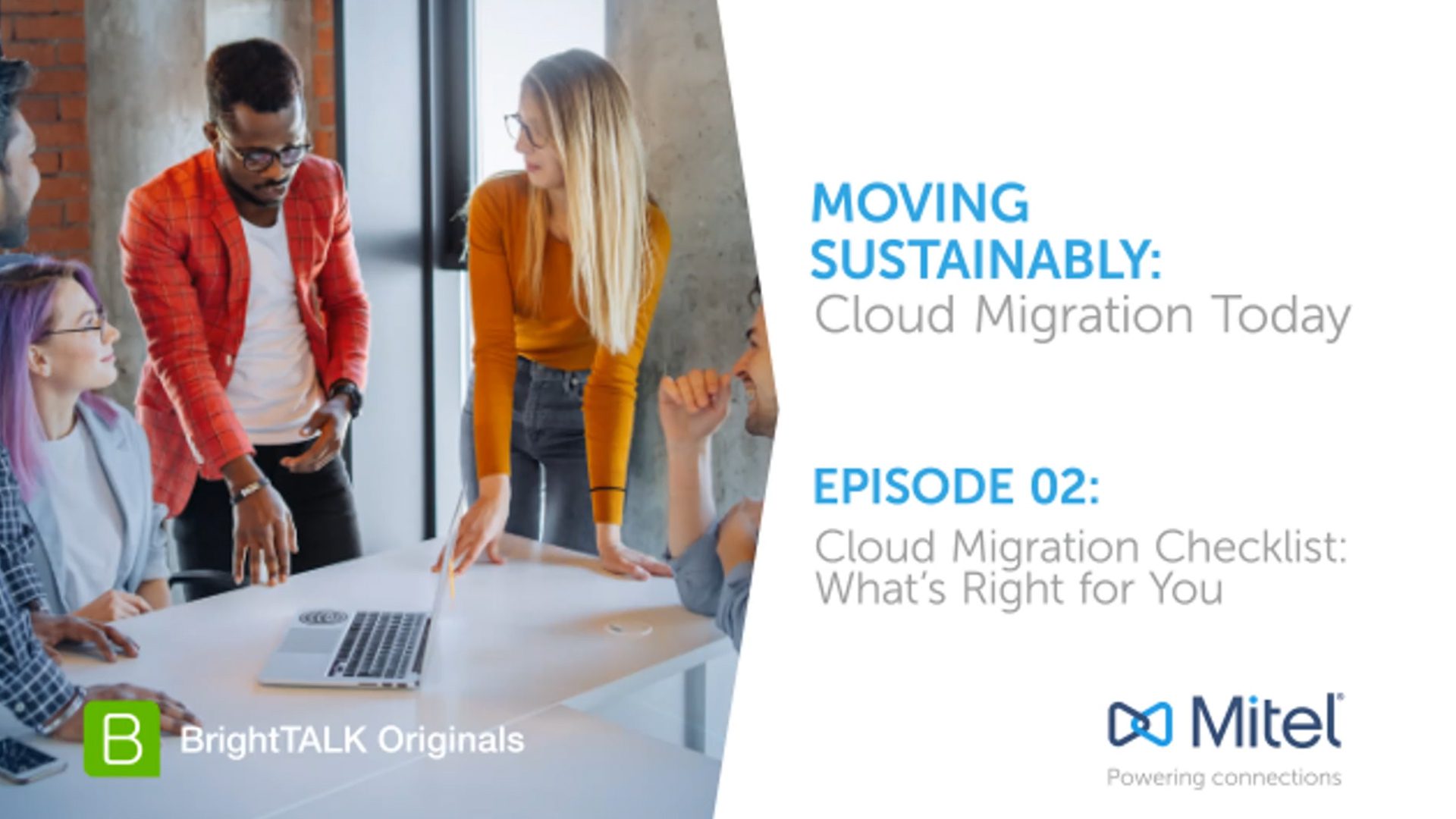Over the past couple of months, we’ve written a number of blogs and hosted a number of webinars outlining the "whys" of moving your communications systems to the cloud.
By now, you might be thinking, “Okay, I’m convinced. But how do I go about it?”
The “how” is perhaps the most important question in your transition to the cloud. While there are huge benefits to moving to the cloud, there can also be significant challenges along the way. Every step in your journey matters, and not every business will approach the journey, or even each step, in the same way.
Some businesses might be ready, willing and able to make the end-to-end journey to the cloud in one phase. Others might need to take a more cautious, step-by-step approach over a longer timeline. The keys to success are tailoring your approach to the needs of your business, clearly defining where you are, where you want to be, and how you plan to get there. To lay the foundation for a smooth migration and eliminate trade-offs, businesses should complete 3 key steps:
- Build a comprehensive plan that supports clear objectives
- Pursue internal activities to set the stage for success
- Obtain guidance from a trusted, objective partner
Chart Your Course Before You Set Sail
Reaping the full benefits from your move to the cloud requires you to have a clear understanding of the following:
- What are your objectives? It’s important to understand exactly what you’re trying to accomplish with your move to the cloud and make your goals as measurable as possible. For instance, one key objective may be to take advantage of the superior security the cloud offers. If so, document what specific security issues are you hoping to avoid or lessen. Your goals may also include improving the quality and reliability of your remote work environment. With increasing numbers of employees working from home full- or part-time, it’s essential to ensure they stay connected regardless of location or what devices they’re using.
In your journey to the cloud, look for ways to measure improvements in remote worker productivity and satisfaction. And if your organization is moving to the cloud to ensure employees can take advantage of next-gen software and tools, anticipate what productivity improvements you might gain when employees have earlier access to the latest updates and features, as well as the cost savings you may achieve because IT no longer needs to perform system maintenance. Look beyond the date your migration is expected to be complete. Identify where you want to be by next year, in three years, and in five. - What are your timelines and milestones? Chart the step-by-step journey that makes sense for your business. Ask yourself: “In what order should the steps occur to ensure a smooth migration and minimal disruption to the business?” Identify when you’ll need certain features, and ensure timelines are realistic.
- What potential business disruptions should you anticipate and what’s your "Plan B?" Despite the best laid plans, business disruptions can occur. Having a plan B to mitigate and minimize those risks will give you peace of mind. Maybe you’ll plan for part of your system to be unavailable as it’s being upgraded. What’s your workaround? Identify what unintended disruptions could occur. Which ones are most likely, based on your objectives and planned journey? When could they occur, based on your timeline? Craft a technology and staffing plan that addresses what can you do if they occur, and when you will need to be ready.
Actions To Take Before You Migrate
It’s advisable for some businesses to start their journey to the cloud by taking preliminary, internal actions first. These activities can lay a solid foundation for the eventual move. For example:
- Consider consolidating multiple sites and SIP services to make your business run more smoothly
- Identify and capture institutional knowledge that will facilitate the journey. It’s hard to move information into the cloud from someone’s brain!
Reach out to key stakeholders within your organization who may have specific requirements. Talking internally will help you determine what different departments might need from a move to the cloud. You may discover requirements you hadn’t thought of and mitigate risks you might not have considered.
Choose A Flexible, Knowledgeable Partner
There is no ‘one-size-fits-all’ journey to the cloud. Some businesses have existing systems that they can leverage with cloud-based technologies and retain existing infrastructure. Others will be better served by hustling straight over to full cloud integration. Different regions, different vertical structures and different business sizes and histories will all play a role in how a specific business approaches the cloud.
That’s why having a flexible and knowledgeable partner is so important. The right partner can understand your specific requirements and help identify which systems may be well-suited to a lift-and-shift straight over to the cloud. That partner can also help you determine which legacy applications should not make the move to the cloud right now, or ever.
While the cloud offers a lot of value and many opportunities, if you feel pressured by a partner with a ‘cloud-or-bust’ approach, it could mean more headaches, frustrations, and costs down the line. Every step on your cloud journey should provide value to your business today. A good partner can help you figure out which approach works best for you now, and which approach is worth looking at later or not at all, giving you peace of mind.
A good plan lets you have your cake and eat it too
In life, changes often lead to trade-offs. In your move to the cloud, they don’t need to be. Many times, apparent trade-offs in cloud migration are the result of moving too quickly with too little information. A move to the cloud can, and should, meet your requirements for business-as-usual at every stage of the process.
Take security. Many breaches of cloud security are actually the result of misconfigurations during the migration process. They have nothing to do with the cloud itself, which is likely more secure than the in-house servers of most businesses. In fact, most businesses will benefit from the improved network security offered by the cloud, provided the migration to a cloud environment isn’t rushed.
Ultimately, making a smooth move to the cloud means asking a lot of questions and investing time and effort in building your custom plan. Our sales experts are ready, willing and able to help you map your path to the cloud and ensure a smooth, successful transition. Why not get started today?
Source: By the Experts at Mitel


